MATH 302 – Discrete Mathematics – Section 501
advertisement
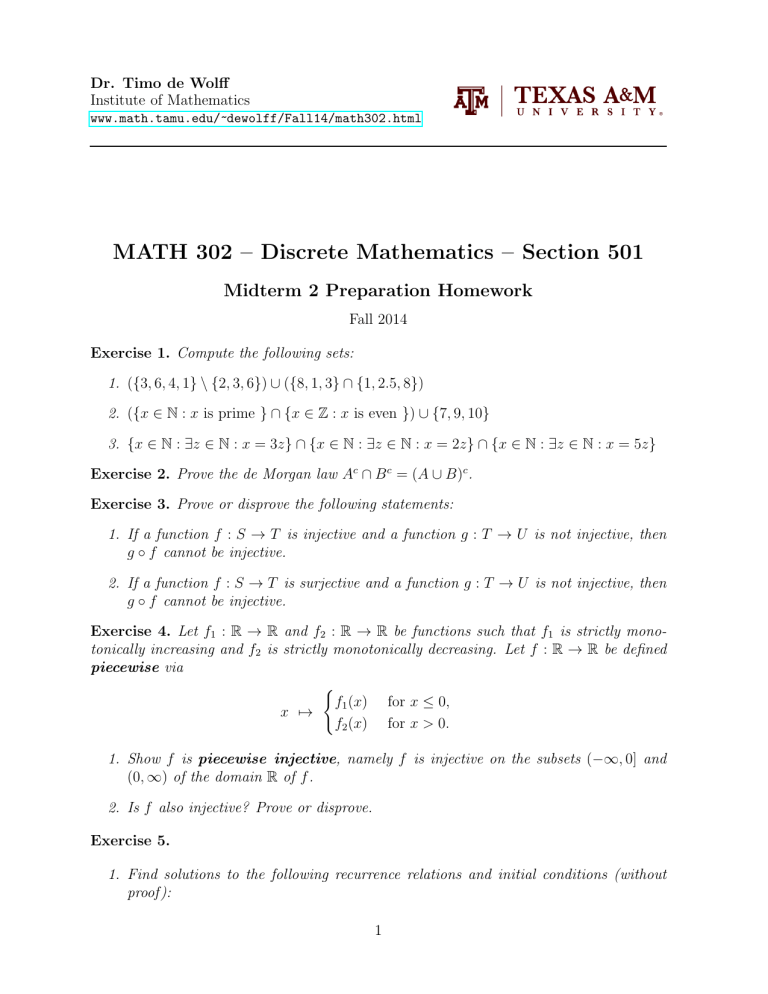
Dr. Timo de Wolff
Institute of Mathematics
www.math.tamu.edu/~dewolff/Fall14/math302.html
MATH 302 – Discrete Mathematics – Section 501
Midterm 2 Preparation Homework
Fall 2014
Exercise 1. Compute the following sets:
1. ({3, 6, 4, 1} \ {2, 3, 6}) ∪ ({8, 1, 3} ∩ {1, 2.5, 8})
2. ({x ∈ N : x is prime } ∩ {x ∈ Z : x is even }) ∪ {7, 9, 10}
3. {x ∈ N : ∃z ∈ N : x = 3z} ∩ {x ∈ N : ∃z ∈ N : x = 2z} ∩ {x ∈ N : ∃z ∈ N : x = 5z}
Exercise 2. Prove the de Morgan law Ac ∩ B c = (A ∪ B)c .
Exercise 3. Prove or disprove the following statements:
1. If a function f : S → T is injective and a function g : T → U is not injective, then
g ◦ f cannot be injective.
2. If a function f : S → T is surjective and a function g : T → U is not injective, then
g ◦ f cannot be injective.
Exercise 4. Let f1 : R → R and f2 : R → R be functions such that f1 is strictly monotonically increasing and f2 is strictly monotonically decreasing. Let f : R → R be defined
piecewise via
(
f1 (x) for x ≤ 0,
x 7→
f2 (x) for x > 0.
1. Show f is piecewise injective, namely f is injective on the subsets (−∞, 0] and
(0, ∞) of the domain R of f .
2. Is f also injective? Prove or disprove.
Exercise 5.
1. Find solutions to the following recurrence relations and initial conditions (without
proof ):
1
(a) an := 3an−1 , a0 := 2
(b) an := an−1 + n, a0 := 1
(c) an := 2an−1 − 1, a0 := 1
2. Compute the following sums:
P4
(a)
j=1 j!
P3 P3 k2
(b)
k=0 j!
j=1
Exercise 6. Prove the following statements:
1. The set of all closed intervals of finite length over the real numbers is not countable.
√
2. The set {x : x is rational or of the form p · 5 with p prime} is countable.
Exercise 7. Let fj denote the Fibonacci numbers. Prove by mathematical induction that
for all n ∈ N∗ holds:
f1 + f3 + · · · + f2n−1 = f2n .
Exercise 8. Recall that for a number r ∈ N∗ we define rZ := {z ∈ Z : ∃x ∈ Z : z = r · x}.
1. Prove that for every r ∈ N∗ and n ∈ N∗ holds:
r n Z ⊆ rZ.
2. Show: p ∈ N∗ is in rZ if and only if r is a divisor of p.
Exercise 9. For a string w (over some given alphabet) let |w| denote its length and for
every 1 ≤ i, j ≤ |w| let w(i, j) denote the substring given by the i-th, (i + 1)-st,. . .,j-th
character in w. For two strings w1 and w2 we denote by w1 · w2 its concatenation.
Investigate the following pseudocode:
Input: A string w.
Output: A string w ′.
begin
if |w| = 1 then
return w
else
j k
j
k
|w|+1
return StringAlgo w |w|
,
|w|
·
StringAlgo
w
1,
2
2
Algorithm 1: StringAlgo
1. Compute StringAlgo(“Hase”), StringAlgo(“Rabbit”) and StringAlgo(“Halloween”).
Describe in own words, what the algorithm does.
2. Show via strong induction: StringAlgo is injective.
2
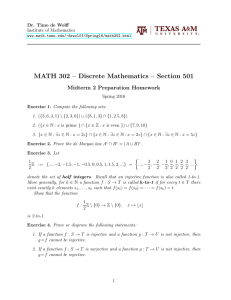

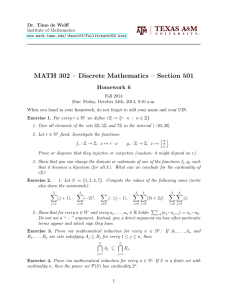
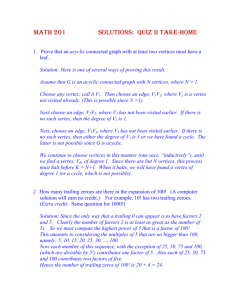
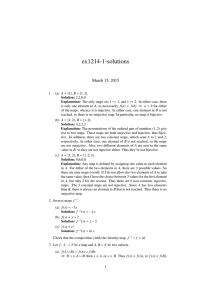
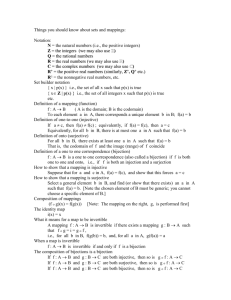
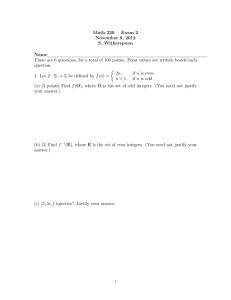
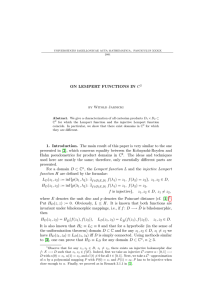
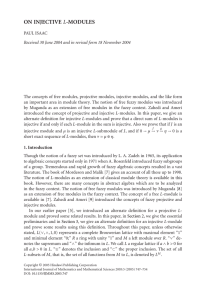
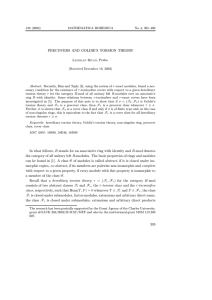
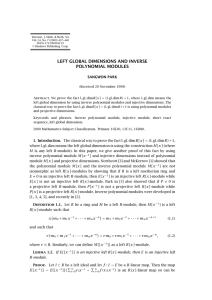
![247 MEASURABILITY OF SOME SETS OF BOREL MEASURABLE FUNCTIONS ON [0, 1]](http://s2.studylib.net/store/data/010829452_1-13f2c7f4daf35c5fcd22a0b93fd9ad52-300x300.png)